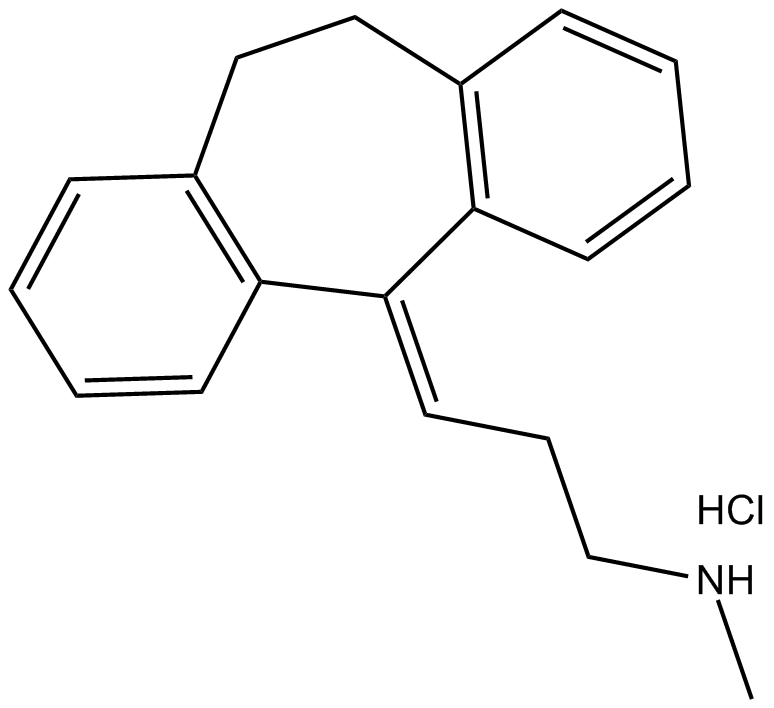Nortriptyline (hydrochloride) (Synonyms: Acetexa,Pamelor®) |
| Catalog No.GC11989 |
La nortriptyline (chlorhydrate) (chlorhydrate de desméthylamitriptyline), le principal métabolite actif de l'amitriptyline, est un antidépresseur tricyclique utilisé pour soulager les symptômes de la dépression.
Products are for research use only. Not for human use. We do not sell to patients.

Cas No.: 894-71-3
Sample solution is provided at 25 µL, 10mM.
Ki: 3.4 nM: blocks the norepinephrine transporter.
Ki: 161 nM: inhibits the serotonin transporter.
Nortriptyline, a dibenzocycloheptene-derivative tricyclic antidepressant, inhibits norepinephrine and serotonin transporters, which is used for short-term treatment of various forms of depression, including major depression, dysthymia, and atypical depressions. Nortriptyline suppresses the norepinephrine presynaptic receptors, thus inhibiting the reuptake of this neurotransmitter and increasing the concentration in the synaptic cleft in the central nervous system.
Norepinephrine transporter is responsible for the sodium-chloride (Na+/Cl-) -dependent reuptake of extracellular norepinephrine. Serotonin transporter transports serotonin from the synaptic cleft to the presynaptic neuron.
In vitro: Nortriptyline dose-dependently dampened the spontaneous migration of human polymorphonuclear cells (PMN) at the highest concentrations (10-4 and 10-5 M). Nortriptyline decreased the motility of the cells at 10-4M. Chemotaxis of PMN triggered by 10-10M N-formyl-L-methionil-L-leucyl-L-phenylalanine (FMLP) was blocked by nortriptyline in a dose-dependent fashion [1].
In vivo: Rats and mice were injected intraperitoneally with nortriptyline at the dose of 50, 25, 12.5 mg/kg. After 2 hours of the last injection, nortriptyline inducted little or no inhibition of the 4, α-dimethyl-meta-tyramine (H 77/77) induced depletion in a dose of 25 + 12.5 mg/kg. However, there was a partial blockade, evoked by nortriptyline in a dose of 50 + 25 mg/kg, of the H 77/77 elicited depletion in the noradrenaline nerve terminals in all the rats studied. Additionally, nortriptyline also proved to be active in the brain, however, its activity was low [2].
References:
[1]. Sacerdote, P., Bianchi, M., & Panerai, A. Chlorimipramine and nortriptyline but not fluoxetine and fluvoxamine inhibit human polymorphonuclear cell chemotaxis In vitro. General Pharmacology: The Vascular System. 1994; 25(3): 409-412.
[2]. Carlsson, A., Corrodi, H., Fuxe, K., & Hkfelt, T. Effects of some antidepressant drugs on the depletion of intraneuronal brain catecholamine stores caused by 4, α-dimethyl-meta-tyramine. European Journal of Pharmacology.1969; 5(4): 367-373.
Average Rating: 5 (Based on Reviews and 32 reference(s) in Google Scholar.)
GLPBIO products are for RESEARCH USE ONLY. Please make sure your review or question is research based.
Required fields are marked with *




















